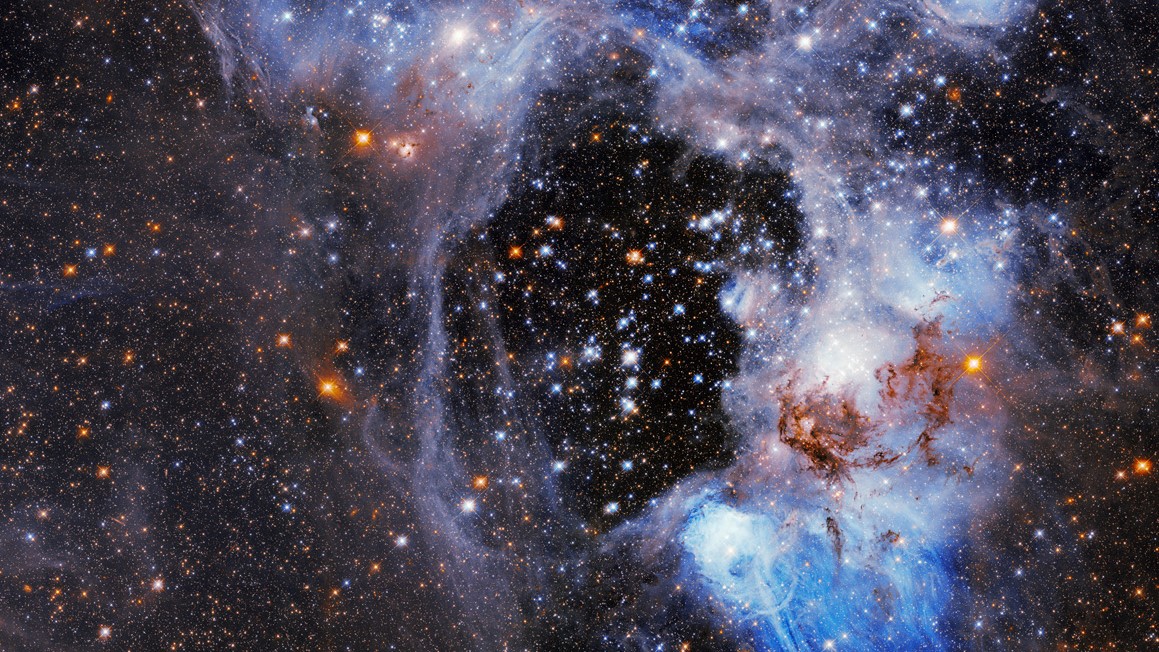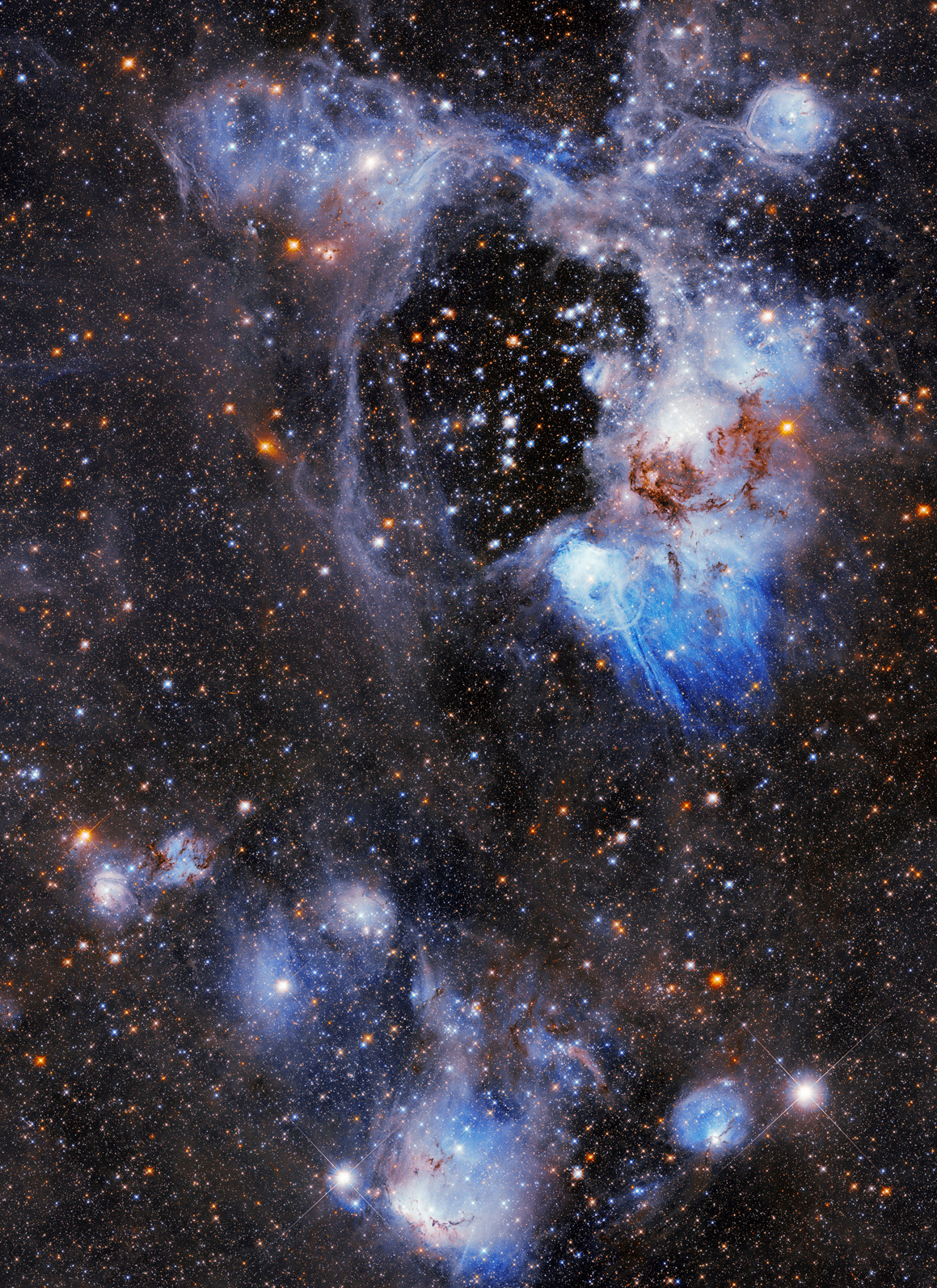This bizarre 'superbubble' spotted by the Hubble Space Telescope has scientists scratching their heads
Scientists aren't exactly sure how it formed.

Wispy clouds of gas and a strange "superbubble" dominate the view of a new Hubble Space Telescope image.
The view stars a nebula, or gas cloud, known as N44, that is located in a nearby galaxy called the Large Magellanic Cloud. In the newly released image, you can see hydrogen gas glowing in the dark, along with dark dust lanes and stars of all ages, in a complex structure roughly 170,000 light-years from Earth.
NASA said the "superbubble," which appears in the upper central part of the gas cloud, is of particular interest because scientists are trying to figure out how the 250-light-year wide structure formed.
Related: The best Hubble Space Telescope images of all time!

"Its presence is still something of a mystery," agency personnel wrote in a statement, explaining there are two leading hypotheses. One is that huge stars blew away the gas with stellar winds, but the wind velocities measured there are "inconsistent" with what the models suggest, according to the statement.
Another possibility is perhaps a dying star's explosion, known as a supernova, caused the hollow in the gas. Lending credence to the supernova theory is evidence of at least one supernova remnant near the superbubble.
Astronomers spotted a 5-million-year-old difference between stars within the superbubble and stars at the rim of the superbubble. NASA said this age difference suggests "multiple, chain-reaction star-forming events" and pointed to a zone of intense star formation at the lower right of the superbubble, which appears in deep blue in the Hubble Space Telescope image.
Get the Space.com Newsletter
Breaking space news, the latest updates on rocket launches, skywatching events and more!
The glowing gas of N44 pegs it as an emission nebula, a type of gas cloud that has the molecules energized by star radiation. The gas emits light energy as it begins cooling, producing the glowing effect.
Follow Elizabeth Howell on Twitter @howellspace. Follow us on Twitter @Spacedotcom and on Facebook.
Join our Space Forums to keep talking space on the latest missions, night sky and more! And if you have a news tip, correction or comment, let us know at: community@space.com.

Elizabeth Howell (she/her), Ph.D., was a staff writer in the spaceflight channel between 2022 and 2024 specializing in Canadian space news. She was contributing writer for Space.com for 10 years from 2012 to 2024. Elizabeth's reporting includes multiple exclusives with the White House, leading world coverage about a lost-and-found space tomato on the International Space Station, witnessing five human spaceflight launches on two continents, flying parabolic, working inside a spacesuit, and participating in a simulated Mars mission. Her latest book, "Why Am I Taller?" (ECW Press, 2022) is co-written with astronaut Dave Williams.









